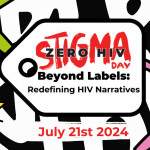Wednesday, March 10, marks National Women and Girls HIV/AIDS Awareness Day (NWGHAAD) 2021. The annual event is organized by the Office on Women’s Health, a division of the Department of Health and Human Services.
National Women and Girls HIV/AIDS Awareness Day is March 10th but HIV prevention is 24/7/365! Find out how you can help end the HIV epidemic: https://hiv.gov. Join the conversation using #NWGHAAD!
Posted by Office on Women’s Health - U.S. Department of Health and Human Services on Monday, March 8, 2021
Each year, the day of observance brings local and national attention to the impact of HIV on women and girls, notably those who are African American, Latino and transgender because they account for higher HIV rates among women. The awareness day also aims to show support for those living with and at risk for the virus and to educate about prevention, treatment and care.
View this post on Instagram
The theme of the 16th annual event is “You. Me. WE. Changing the face of HIV.” According to the Office of Women’s Health, the theme “highlights the role that everyone can play in HIV prevention—individuals, community organizations, health care professionals, businesses, faith institutions, and so many others.
“There are steps we can all take to protect ourselves, our partner, our family, and our neighbors," the website continues. “By working together, we can help eliminate HIV and improve the quality of treatment and care for people currently living with HIV.”
View this post on Instagram
The good news is that HIV rates among women overall have declined 7% between 2014 and 2018, the most recent year for which data are available. In 2018, women accounted for 19% of the 37,968 new HIV cases, meaning that 7,190 women were diagnosed with HIV. Of those cases, 85% were a result of heterosexual contact, and 15% were related to injection drug use, according to a fact sheet from the Centers for Disease Control and Prevention. Of the estimated 1,173,900 people estimated to have HIV in the United States, 261,800 were women.
View this post on Instagram
The CDC fact sheet lists several of the challenges that place women at higher risk for HIV:
- Racism, discrimination and stigma may affect whether some women seek or receive high-quality health services.
- Because receptive sex is riskier than insertive sex, women are more likely to get HIV during vaginal or anal sex than their partner.
- Some women don’t know their male partner’s risk factors for HIV (such as injection drug use or having sex with men) and may not use a condom or medicine to prevent HIV.
- Women who have been exposed to intimate partner violence may be more likely to engage in risky behaviors or be forced to have sex without a condom or medicines to prevent or treat HIV.
This #InternationalWomensDay, join AIDSVu in raising awareness about the impact of HIV on women and girls, especially on women of color and transgender women: https://t.co/GGcwHkcS0I pic.twitter.com/wnt9xRxcc6
— AIDSVu (@AIDSVu) March 8, 2021
AIDSVu.org offers even more updated and nuanced data regarding women and HIV along with sharable graphics. A few examples of the AIDSVu statistics:
- In 2019, Black women represented 7% of the U.S. population but 11% of all new HIV diagnoses and 56% of all new HIV diagnoses among women.
- In the same year, Hispanic women represented 9% of the U.S. population, 3% of all new HIV diagnoses and 17% of all new HIV diagnoses among women.
- White women represented 36% of the U.S. population in 2019, 4% of all new HIV diagnoses and 22% of all new HIV diagnoses among women.
View this post on Instagram
To learn more about the intersection of HIV and women, see the POZ Basics section titled HIV and Women or click on #Women. And don’t miss the opinion piece by transgender HIV advocate Tori Cooper titled “My Black Is Beautiful, Living Free of HIV Stigma and Shame” and the lifesaving advice that long-term survivor Phyllis K. offers in “I’m a Retired Businesswoman Who Kept My HIV a Secret Until Now.”
In addition, the current print issue of POZ highlights HIV advocates who are women. You can read the entire March 2021 issue here.







Comments
Comments